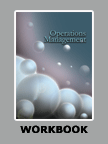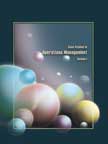Tesco's Supply Chain Management Practices
|
|
ICMR HOME | Case Studies Collection
Case Details:
Case Code : OPER054
Case Length : 19 Pages
Period : 2000-05
Organization : Tesco
Pub Date : 2006
Teaching Note :Not Available
Countries : UK
Retail
To download Tesco's Supply Chain Management Practices case study
(Case Code: OPER054) click on the button below, and select the case from the list of available cases:

Price:
For delivery in electronic format: Rs. 400;
For delivery through courier (within India): Rs. 400 +Shipping & Handling Charges extra
» Operations Case Studies
» Case Studies Collection
» ICMR HOME
» View Detailed Pricing Info
» How To Order This Case
» Business Case Studies
» Case Studies by Area
» Case Studies by Industry
» Case Studies by Company 
Please note:
This case study was compiled from published sources, and is intended to be used as a basis for class discussion. It is not intended to illustrate either effective or ineffective handling of a management situation. Nor is it a primary information source.
Chat with us

Please leave your feedback

|
|




<< Previous
Excerpts
Tesco's SCM Initiatives
|
Tesco's SCM relied heavily on the concept of 'Process Improvement' and was
guided by its core purpose of creating value for customers so as to earn their
lifetime loyalty. The key period for Tesco's supply chain initiatives was
between 1983 and 1996; during this time, the company introduced several systems
including point of sale scanning, centralized ordering, centralized
distribution, automated warehouse control and electronic data interchange (EDI).
Graham Booth (Booth) was Director, Supply Chain, Tesco between 1985 and 2002. He
felt that it was necessary to have replenishment triggered by customers, for
which, using the same set of suppliers along with cross dock distribution
centers (DC) and vehicles supplying to all store formats would be ideal...
|

|
Managing the Supply Chain
As of 2005, Tesco had 2,365 stores across the world, 1,780 of which were in
the UK operating on 24.2 million square feet of retail area. In the UK,
Tesco operated primarily through four types of stores (Refer Exhibit III for
Tesco's store format). The company's international operations were spread in
12 countries across the world. The sheer size of Tesco's operations called
for high efficiency in supply chain. Even if the service level was at 99.9%,
it still meant six million service failures...
|
|
Looking Ahead
In the East European Markets, Tesco's logistics and supply chain were not
well developed and relied heavily on deliveries from suppliers. This was a
viable proportion for the large stores but not for the smaller ones.
As Tesco planned to expand smaller stores in Eastern Europe, developments in
the supply chain became necessary. In Thailand and Korea automated DCs have
been operational. For Tesco to gain an edge over other multinational
retailers entering these markets, it was necessary to build viable supply
chain solutions... |
Exhibits
Exhibit I: Supply Chain Top 10
Exhibit II: Tesco before and after Lean Solution (Example of Cola)
Exhibit III: Tesco's Store Format
Exhibit IV: Tesco's Step Change Program
Exhibit V: Tesco's Distribution Centers (2003)
Exhibit VI: RFID Enabled Supply Chain
|
|










